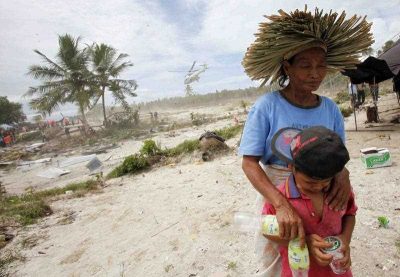Every year, the start of summer begins with a familiar refrain predicting the severity of the upcoming hurricane season. This year, forecasters say it could be the most active season since 2012—the year Superstorm Sandy pounded parts of the East Coast.
Over the past few weeks, tropical storms Bonnie and Colin have already forced states to mobilize emergency plans. In response, emergency officials are pushing out messages, checklists and warnings to try and get individuals to make a plan, create an emergency kit, or download apps that will help them if the worst happens.
Yet, the data show individuals just don't care that much about being prepared for a disaster. Healthcare Ready's 2016 survey on disaster preparedness found only 25% of adults have discussed a plan and even fewer, 18%, have an emergency survival kit. Even relatively easy tasks like keeping track of one's medicines are not a priority, with less than half of Americans able to list all of their prescriptions.
Who does plan? The majority of large healthcare systems have robust business continuity programs, and every facility accredited by the Joint Commission is required to certify they meet minimum levels of preparedness. But the lack of individual planning makes the job of hospitals, health systems and emergency responders more difficult. Not only must providers plan for continuity among loss of power and critical supplies, they must plan for mass casualty events and, increasingly, help people manage chronic health conditions that could worsen and drive acute incidences.
Even more requirements may be on the horizon as the CMS considers a rule to require providers and health systems to establish emergency plans across 17 types of healthcare settings. Providers plan not just because it makes good business sense, but because they recognize their responsibility to their communities.
So why don't people plan? For one, disasters are scary. No one wants to think about the terrible things that could befall them, destroy their homes, or hurt their families. Also, the likelihood of a massive, catastrophic, disaster hitting one person's community feels so small that the time and effort to prepare doesn't feel worth it.
The reality is we are at risk. Whether it's wildfires, tornadoes, hurricanes or H1N1, there have been more than 1,400 federally declared disasters in the past 10 years. These disasters are not confined to one geographic region; they hit every state.
How can we fill the gap between the need for every person to be ready and the apathy of many Americans? One way is to copy the successful early childhood and elementary programs like those on seat belt use or anti-smoking campaigns. Many organizations, including the Federal Emergency Management Agency, HHS and the American Red Cross have developed programs that can begin to change our culture to embrace preparedness.
But change of this scale can take decades, and until that occurs, preparedness should be focused on community-level resiliency. Doing so lifts some of the burden from individuals and moves it to a higher level without replacing it all together. New approaches to community resiliency involve government entities partnering with private enterprises to develop plans prioritizing how critical services such as power, healthcare and communications will be restored.
In a sector like healthcare, this coordination is critical because of the sheer number of groups involved. Providers of care include nurses, doctors, hospitals, nursing facilities, assisted living centers, home care staffers and pharmacists. They all need access to medications, durable supplies, oxygen, and other materials provided in a timely manner. They need healthcare distributors to get them products. They need power and communications to perform critical services. They need passable and safe roads. Restoring critical services like theses can only be done in partnership between government and private industry.
Superstorm Sandy was a wake-up call, and communities are responding. Efforts like the Community Disaster Resilience Initiative by the Robert Wood Johnson Foundation show a new commitment to planning and response. Sometimes preparedness doesn't look like preparedness. The growth of wellness centers and pharmacist collaborative practice agreements—which can allow pharmacists to conduct tests and dispense medicines without the need for a doctor—can increase Americans' access to convenient healthcare and help increase community resiliency.
Over the past decade, the 1,400 disaster declarations have shown us the strength and indomitable resiliency of the American people. In time, better individual planning combined with a deliberate approach to disaster preparedness—through government and private industry collaboration—will certainly increase our readiness.
As we begin the summer season that seems to bring so many natural disasters, it is imperative communities work to adopt structured, public-private disaster planning—starting today. Because of their critical role in the communities they serve, America's hospitals and health systems must be proactive participants in these conversations.
Emily Lord is executive director of Healthcare Ready (founded in 2006 as Rx Response), a not-for-profit dedicated to building healthcare resilience by strengthening healthcare supply chains through collaboration with the public health and private sectors to address pressing issues before, during, and after disasters.




